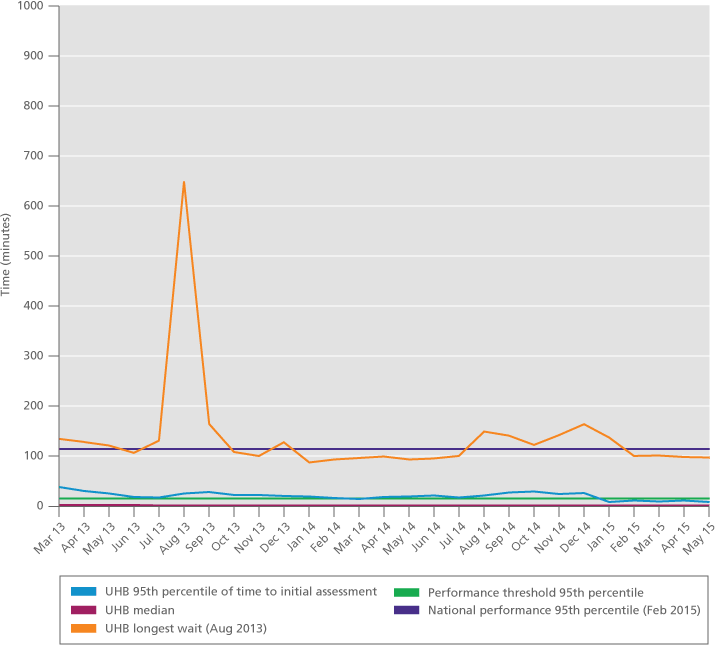Your views

Your feedback is vital to us as we continue to increase the quality of our services.
You are here:
Date: 19 January 2025
Time: 12:27
Time to initial assessment in A&E
What does this indicator mean?
Time to initial assessment is the time from arrival at A&E to the time when a patient is assessed by an emergency care medical or nursing professional to determine priority for treatment. The initial assessment should include a brief history, pain and early warning scores (including vital signs) to determine how unwell the patient is and whether emergency treatment is required.
As there is no commonly accepted and consistent definition of major cases at present, the indicator applies only to patients who arrive by ambulance.
What is good performance?
The time to initial assessment should be minimised. Good practice would be for all patients arriving by ambulance to be assessed within 15 minutes of arrival. Trusts are expected to meet a performance threshold of 95% of patients waiting 15 minutes or less.
How is UHB performing?
In May 2015 95% of patients waited eight minutes or less from arrival at A&E to initial assessment. The average (median) wait was one minute. The latest available national performance data shows that 95% of patients waited 114 minutes or less in February 2015.

What is UHB doing to improve performance?
This indicator has been consistently achieved since January 2015 following the implementation of streaming within the department. Surveillance will ensure that this indicator continues to be achieved.
UHB data quality
Trusts are expected to have less than 5% of patients with a missing assessment time. The Trust's patient management system ensures that all patients have an assessment time recorded.


